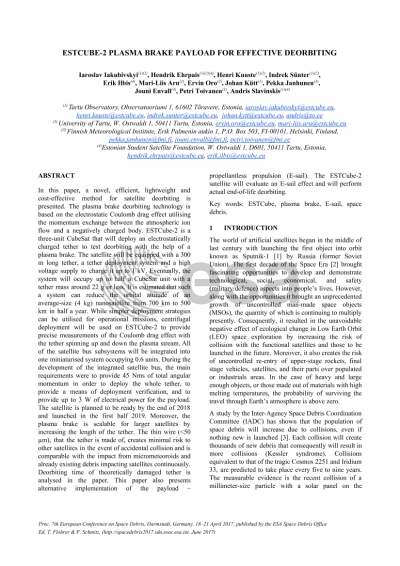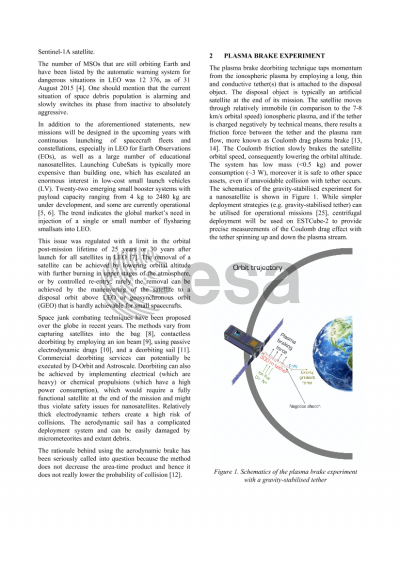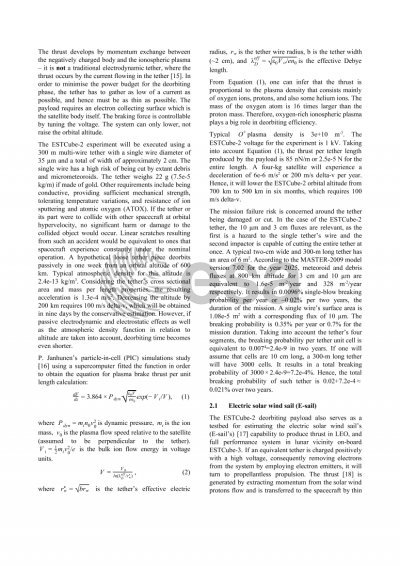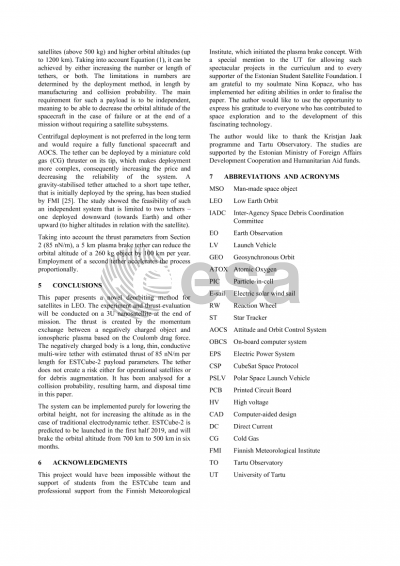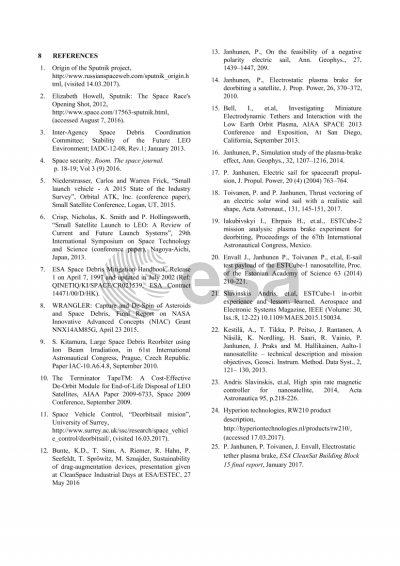Document details

Abstract
In this paper, a novel, efficient, lightweight and cost-effective method for satellite deorbiting is presented. The plasma brake deorbiting is based on the electrostatic Coulomb drag effect utilising the momentum exchange between the ion flow and a negatively charged body. In the case of ESTCube-2 is a long thin electrically charged tether deployed from a three-unit CubeSat. ESTCube-2 will be equipped with a 300 m long tether and its support systems for deploying and charging it up to 1 kV. Eventually, the system will occupy up to half a CubeSat unit with a tether mass around 30 grams. It is estimated that such a system can reduce the orbital altitude of an average-size nanosatellite from 700 km to 500 km in half a year. While simpler deployment strategies can be utilised for operational missions, centrifugal deployment will be used on ESTCube-2 to provide precise measurements of the Coulomb drag effect with the tether spinning up and down the plasma stream. All of the satellite bus subsystems will be integrated into one miniaturised system occupying 0.5U. During the development of the integrated satellite bus the main requirements were to provide 23 Nms of total angular momentum in order to deploy the whole tether, to provide a means of deployment verification, and to provide up to 3 W of electrical power for the payload. The satellite is planned to be ready by the end of 2017 and launched in first half 2019. Moreover, the plasma brake is scalable for larger satellites by increasing the length and/or the number of tethers. The thin tether (<50 µm) creates minimal risk to other satellites and is comparable with the impact from micrometeoroids and already existing debris experienced continuously by the spacecraft. Deorbiting time of theoretically damaged tether is analysed in the paper. This paper also presents alternative implementation of such system – propellantless propulsion (E-sail) in the entire solar system. The ESTCube-2 satellite will evaluate an E-sail effect and will commit actual deorbiting at the end of mission.
Preview
